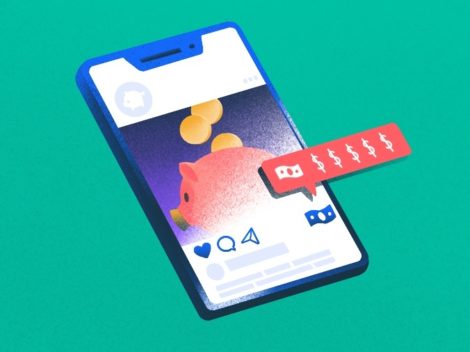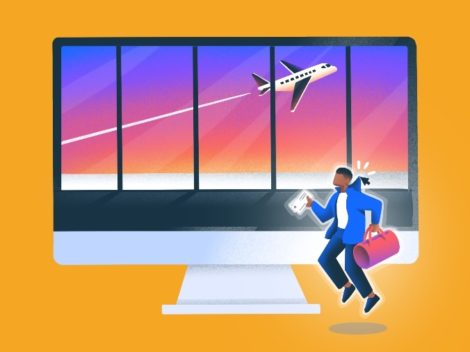As everyone was in holiday mode a few weeks ago in December, Spotify confidentially filed documents with the SEC to go public, likely in Q1 of 2018.
Previously, I discussed Spotify’s numbers and examined how those figures looked before an IPO filing. Now we can see how those numbers look in context.
Follow Crunchbase News on Twitter & Facebook
This filing bolsters prior reports that Spotify would forego a traditional IPO in favor of a direct listing, a method of going public that has left many scratching their heads. For those unfamiliar with it, a direct listing is a way allow a firm’s shares to begin regular trading while avoiding the normal IPO roadshow process.
When asked about the direct listing strategy, IPO expert Barrett Daniels of Nextstep Advisory Services told Crunchbase News that there are a few reasons companies might choose to pursue the strategy. It typically boils down to the fact that the company may not be “strong enough” to transact a traditional IPO due to these reasons:
- The company’s growth (or lack thereof).
- The company’s size (in terms of revenue).
- The general climate of the industry.
So do these reasons provide Spotify grounds to go direct, especially considering how much money could be left on the table? Let’s find out.
1. Company Growth
Spotify has the kind of crazy growth that companies dream of. As its subscriber numbers have gone from 50 to over 100 million users, Spotify’s valuation has similarly been adjusted. It’s worth remembering, though, that while the total subscriber number sits somewhere north of 130 million users, approximately 60 million are paying listeners.
So Spotify is big enough to attract attention and generate a lot of excitement. In fact, because Spotify is such a well-known company to go public, an IPO roadshow seems to be precisely what it would want. More attention and more hype might mean more money on gameday.
2. The Company’s Size
This kind of fast-paced growth also contextualizes the music company’s size in terms of its revenue. According to Daniels, the size of a company’s revenue will dictate how larger institutions view it; if the revenue looks too small, larger institutions could deem the company too early or too risky, and therefore might be uninterested. But given Spotify’s outsized growth, though, perhaps this is a reaction to its continued unprofitability (as of yet).
3. General Industry Climate
Daniels also noted that in some direct listing cases, the decision to forego a traditional IPO could be something as simple as a timing issue. Industries go through hot and cold periods, and a cold period could convince a private entity to forgo the public process.
However, this doesn’t typically apply to the music industry. Because of business with mainstream acts, music companies tend to be more well-known among public investors than, say, a company which perhaps works on tooling or shipping. Therefore, Spotify has no reason to think that the climate would change at all between now and an expected 2018 IPO date.
Going through Barrett’s list of reasons, we can see that Spotify’s direct listing doesn’t pass muster on these grounds. But there are two outside arguments that augment the viability of direct listing: saving money on the IPO process and stopping the clock on Spotify’s convertible debt raise.
Saving Money
Outside of Barrett’s outline for going direct, Spotify could limit costs by foregoing a normal, pre-IPO roadshow. However, experts have pointed out that this doesn’t make much sense. The money which Spotify would save on an IPO roadshow is negligible compared to the amount it would ultimately raise in a normal IPO.
But there are other ways Spotify can save money.
Stopping The Clock
Last year, Spotify took on convertible debt from Dragoneer and TPG, totaling $1 billion. According to David Golden of Revolution Ventures, by listing directly, Spotify could essentially “stop the clock” on these debt-conversions, and presumably, save itself tens of millions of dollars.
As a refresher, under the terms of these notes signed in 2016, Spotify was required to pay 5 percent annual interest, a figure that grows by 1 percent every six months for a total of 10 percent. Investors could then convert the debt into equity at a 20 percent discount of Spotify’s IPO price. If there were no IPO within a year, the discount at which investors could eventually buy back stock would increase 2.5 percent every extra six months.
The Questions Left Lingering
All of this leaves a lingering question: if neither of the two most-cited arguments hold water, does the decision to direct list have anything to do with Spotify’s $20 billion valuation? There have been, as of late, multiple sources which have raised concerns, expressing reticence and opining what a public Spotify will look like. Spotify did not respond to a request for comment.
The streaming market also faces stiff competition. Apple can subsidize its music service until the end of time through its phone and computer sales. Facebook just signed a major deal with Universal, and YouTube is gearing up for its own music service launch. Pandora has just created a Spotify clone, and its post-IPO performance doesn’t bode overwhelming optimism. All of this is now against the backdrop of a $1.6 billion lawsuit filed by Wixen Music Publishing against the streaming music company.
Additionally, here are a few numbers we don’t know which will impact Spotify’s business model long-term:
- What Spotify royalty rates are. It has been reported the company pays anywhere from 58 percent to 83 percent.
- How often Spotify needs to renegotiate royalty deals with the major labels.
- What the percentage stakes each major label owns of Spotify.
We’ll see how things roll out by the end of Q1.

Stay up to date with recent funding rounds, acquisitions, and more with the Crunchbase Daily.




![Illustration of a guy watering plants with a blocked hose - Global [Dom Guzman]](https://news.crunchbase.com/wp-content/uploads/quarterly-global-3-300x168.jpg)
67.1K Followers